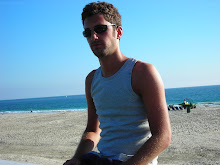The British are peripatetic. As former colonisers and empire builders we are used to travelling, to pitching up in unforeseen and inhospitable places the world over. America New York Los Angeles Florida San Francisco Chicago Boston Middle America , to this country’s rustic, rural heartlands. Certainly there are some states where the British have no real need or appetite to visit, venues without international airports and global business connections, far-flung outposts of splendid seclusion, separated by extended and rolling farmland and rivers, intersected by long, straight highways and punctuated by small hamlets and communities withdrawn from the urban sprawls and twinkling neon of larger, brighter conurbations. Usually British visits to such isles of isolation are not deliberate, arising out of travelling necessity, using Midwest midtowns as linking posts to broader, wider crossings.
Not so for this pair of intrepid explorers, for whom a sojourn in Omaha , Nebraska
Batten down the hatches; here comes the cold
Driving conditions, as we made our way in to Nebraska Iowa
In the darkness it was hard to make out much by way of landmarks and Nebraska Iowa Omaha , Nebraska
Passport to Omaha
It was past 10.00pm by the time Dean and I checked in to our hotel in Omaha Omaha
After a considerable walk we eventually found what looked like the only bar that was still open, and stepped inside to the warmth. Alas, we were only able to order half of our planned burgers and beers double act. Despite being armed with our United Kingdom United States Nebraska Omaha , Nebraska Omaha
Nebraskan negativity towards non-passport based credentials acts well as a microcosm of an occasionally limiting aspect of the United States of America
The hands that built America
We emerged the following morning blinking in to dazzling sunshine, reflecting off of the snow in a cacophony of colour and brightness. In an instant the city was transformed from a macabre municipal menace to an atmospheric Alpine Atlantis. With our hoodies, jackets and, refreshingly, sunglasses at the ready, Dean and I enjoyed the sensation of cold air and blue skies, admiring the crisp white snow on shivering pines, and the crystallised icicles dangling precariously from rooftops and fly-overs.
In this light, Omaha
Before arriving in Omaha Normandy Omaha France Omaha Omaha Germany
In the decades after independence from Britain United States America America United States
The hands that built America Washington DC
To bring the fruits of the west to the homes of the east, to create and settle new communities, America United States
The railroads were the answer; an interconnected system of engineering brilliance, carving up the country from east to west, dissecting the nation with each new outpost towards the pacific. Without America Midwest to the rugged desert of the Dust Bowl. In Omaha , Nebraska Great Lakes and Chicago New England , met at a grand junction Omaha America
Omaha’s Durham Railway Museum, housed inside its old union station, itself a grand and imposing building of marble and golden domes, wide ticket halls and echoing, high ceilings, helps inform its guests of the city’s rise to railway recognition. With exciting exhibits, and the opportunity to walk through both steam and electric locomotives relevant to the varying stages of America
Sullivan’s
The beef did not disappoint, and we felt armed and ready to face the next stage in our trip south towards Kansas City
Before leaving the city we travelled around some of its suburban districts in order to get a better feel for the real Omaha Minneapolis , Minnesota America
In the same way I was taken by Omaha Nebraska Missouri America
~~~
"D Day"
Smoke stacks rising into another frosty sun,
The signal to a workforce that a new day has begun,
Blue collar scholars with bags weighing a tonne,
While politicians limber for another pointless run.
This isn't meant to say thatNebraska
That its snow-filled roads lead to avenues of doubt,
But if the capital wants to renegotiate its standing,
It would do well to recall the glory ofOmaha
Smoke stacks rising into another frosty sun,
The signal to a workforce that a new day has begun,
Blue collar scholars with bags weighing a tonne,
While politicians limber for another pointless run.
This isn't meant to say that
That its snow-filled roads lead to avenues of doubt,
But if the capital wants to renegotiate its standing,
It would do well to recall the glory of
Robert 'Sammy' Samuelson


Fantastic read, I feel like I am there with you..
ReplyDeleteHow you manage to fit this in while holidaying is beyond me.